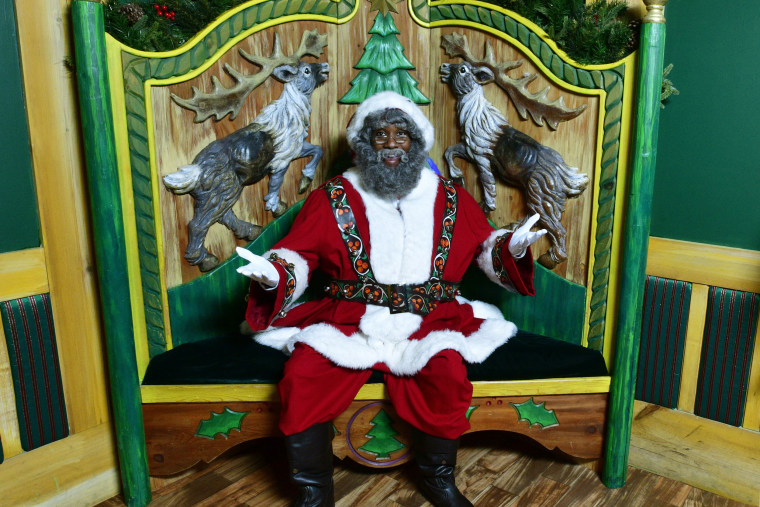Aisha Harris had no idea of the uproar she would create when she recommended the Christmas Penguin.
Ten years ago, the writer and journalist published a lighthearted viral essay titled “Santa Claus Should Not Be a White Man Anymore,” in which she questioned the ubiquity of white Santa imagery.
“America is less and less white, but a melanin-deficient Santa remains the default in commercials, mall casting calls, and movies,” Harris wrote. “Isn’t it time that our image of Santa better serve all the children he delights each Christmas?” In fact, she suggests, a Christmas Penguin can represent the holiday instead of a person.
The backlash was swift, especially after anchor Megyn Kelly responded to the piece on her Fox News show “The Kelly File.” “This is so ridiculous, yet another person claiming it’s racist to have a white Santa,” Kelly said. “And by the way, for all you kids watching at home, Santa just is white.”
Kelly, who hosted “Megyn Kelly Today” on NBC from 2017 to 2018, did not respond to a request for comment. In 2017, Kelly told Business Insider that she generally regrets many of the things she’d said on the air, or wishes she could state them differently, but she did not directly address whether she still says Santa is white.
And though Harris declined to comment, she elaborated on the incident for an adapted excerpt from her 2023 book, “Wannabe: Reckonings With the Pop Culture That Shapes Me.”
“It didn’t take long to feel the debris falling my way as the thing detonated all over the internet that night,” she wrote. “Never in my life had I been called a n—– more times than in the aftermath of Santa Penguin.”
A decade later, though, in an increasingly racially diverse country where about 40% of the population identifies as a person of color, multiracial or nonwhite, the idea of what St. Nick can look like has only expanded. Not just for families who make sure to break out the Black Santa decor this time of year. Nonwhite Santas appear in popular culture, at the center of malls throughout the Christmas season and on holiday products everywhere.
For instance, in some Macy’s stores, known for their elaborate seasonal “Santaland” experience, shoppers can choose to meet Black Santa, white Santa or a Spanish-speaking Santa.
“At Macy’s, we believe that Santa is all things to all people who find joy in his goodness and kindness,” Kathleen Wright, director of production operations for Macy’s Santaland said in a statement. “We treasure the memories that families have made and shared with us over the years and enjoy being able to accommodate requests from near and far.”

In a video that went viral 10 years after Harris’ essay made the rounds, Peter Gerber, who is white, gleefully stocks up on every Black Santa item he finds at Target for his wife, Mariyah, who is Black.
Mariyah Gerber told Today.com that Black Santas “make me happy. They make me smile. And they remind me that there was a time where they didn’t exist.”
For others, the conversation around the icon is more nuanced.
Kelly Carideo, principal at Beechfield Elementary School in Baltimore, said the season is about more than just the holiday figure. “We don’t really see Santa at ‘The Beech,’” she told NBC News at Rockefeller Plaza while on a school field trip to New York. “We’re a 97% Black population at our school, and we celebrate everything at our school: Kwanza, Diwali, Hanukkah, Christmas, all that. We’re into the holiday spirit, hence the reason I brought all my kids out here to New York, but celebrate the people. We don’t talk about Santa Claus particularly. We talk about being good people and enjoying the spirit of the season.”





